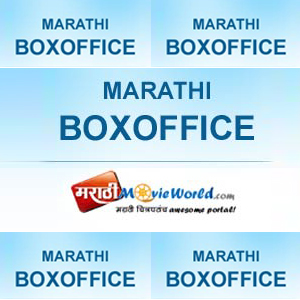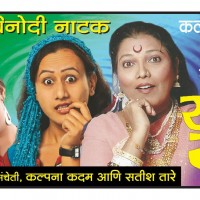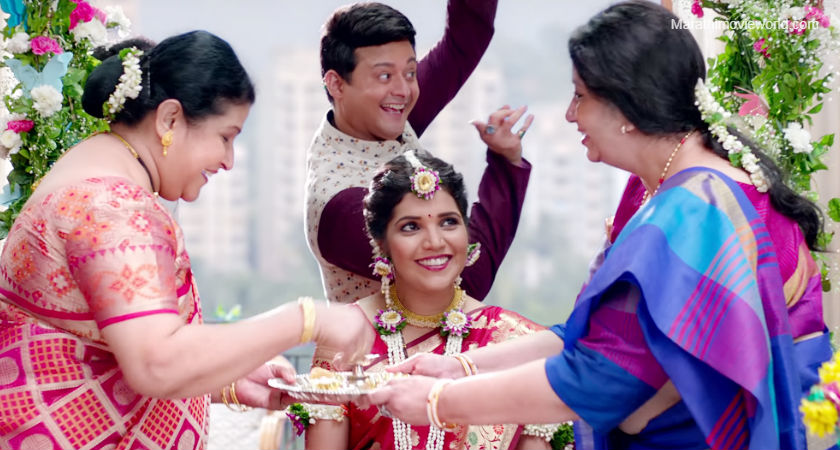Marathi Natak Pune
Full Name: Harshwardhan Madhukar Patil Early Life: Harshwardhan was born on 18th Jan, 1996 in Surat to Mr Madhurkar Patil & Mrs Sunanda Patil. His Father retired From State Bank of India, Navapur Branch, and was Regional Secretary of Dhule Region, Awarded Worldwide For achieving TOT, in SBI consecutively 5 times, whereas his mother is a housewife. He has three elder sisters, Snehal Patil(Sr. IT Manager DIT, UBI Powai), Komal Patil(Bank Of Maharashtra Pune) and Dr.
Ankita Patil (MD Ayurveda). Harshwardhan completed his schooling from SMT S. M Chokhawala L. A Nawapur followed by Shivaji Jr College Nawapur where he completed his junior college studies. He then opted for Pimpri Chinchwad College Of Engineering Pune to take a degree in Computer Engineering.
The Weekend Movie Treat is Here Catch the list of all the Marathi movies to watch this weekend and get rid of all the monotonous plans you have with your dear ones in Pune. At BookMyShow, we provide a list of latest Marathi movies with ratings, reviews from all the reputed sources and latest trailers of Marathi movies.
Journey in Film Industry: Harshwardhan started his acting career by working in a commercial marathi natak ‘Awaj’. Then In College, he performed many Street Plays at State Level.


He first time faced the camera, when he got a role in multi-starrer movie titled “Bus Stop” starring Amruta Khanvilkar, Aniket Vishwasrao, Hemant Dhome, Siddharth Chandekar and Pooja Sawant. Meanwhile, he continued working in plays Like “Cutting Chaha”, “Aflaatoon” and “Not Out Zindagi”. He also directed the Marathi play ‘Vishwas’, which was an Ekankika. Not just that, he worked in the short films like ‘Kranti’ & ‘Bol Bachchan’, as an actor & director. Filmography: Natak- “Vishwas” Marathi Play(Eakankika) as a Director “Awaj” “Cutting Chaha” “Not Out Zindagi” Short Flim- ‘Kranti’ (Director & Actor) ‘Mala Bhi Shikaychey’ ‘Bol Bachhan’(Director & Actor) Flim: 1.
’Chaufher’ (Character-Abhijeet) 2.
. Marathi theatre is theatre in the, mostly originating or based in the state in India, and elsewhere with. Starting in the middle of the 19th century, it flourished in the 1950s and 1960s, and includes forms like (Musical drama) and (folk dance). Today, it continues to have a marked presence in the State of with a loyal audience base, when most theatre in other parts of India have had tough time facing the onslaught of cinema and television.
Its repertoire ranges from humorous social plays, historical plays, musical, to experimental plays and serious drama of the 1970s onwards, by, and, which have influenced theatre throughout India. In fact in the post-, besides, Marathi theatre has been a singular driving force behind innovations and significant in.

Contents. History Ancient and Medieval Period The region of Maharashtra, has had long theatrical tradition, one of the early references is found in the cave inscriptions at by Gautami Balashri, the mother of 1st-century ruler,. The inscription mention him organizing Utsava and Samaja forms of theatrical entertainment for his subjects. There are sources mentioning plays from 17th-century like Lakshmaikalyanam in Marathi-language staged for the ruler of in present-day state.However, they were court plays. British Colonial Period The first public performance of a stage play in Marathi was Sita Swayamvar (Marriage of ) by, based on a popular episode of the epic. Staged in 1843 in, with ruler of the of in audience, it was an experimental play, based on folk theatre form called from the neighbouring region. After the success of his play, he staged many more plays about other episodes of Ramayana.
His plays were largely influenced by the and theatres. Bhave went on to form a travelling theatre troupe. The coming decades saw notable plays like Jhansichya Raniche Naatak (1870), Sawai Madhavravancha Mrutyu (1871), AfjhalKhanachya Mrutyuche Naatak (1871) and Malharrav Maharaj (1875). However, Marathi stage took a distinct theatre form with the musical Shakuntal by in 1880,based on a classical work, by.The success of his theatre company, Kirloskar Natya Mandali paved way for commercial repertories in Marathi theatre, and subsequently the formation of Natak Companies.
The early period of Marathi theatre was dominated by playwrights like Kolhatkar, and who enriched the Marathi theatre for about half a century with excellent musical plays known as. The genre of music used in such plays is known as. It is during this era of the Marathi theatre that great singer-actors like, Bhaurao Kolhatkar and thrived. Post-independence period In the second half of the 20th century, some theatre practitioners have incorporated the traditional forms like tamasha and dashavatar into their plays. In the 1970s, the tamasha form was employed as narrative device and style in several notable plays like by, 's Marathi adaptations of 's as Devajine Karuna Keli (1972) and as Ajab Nyaya Vartulacha (1974), 's Teen paishacha Tamasha (1978), an adaptation of Brecht's.
Mehta also adapted and with. Varyavarchi Varat' the most famous and comedy play written by 'Pu.la.Deshpande' and also this play is still in theaters with new cast & crew. Although the characters created by Pu.La. Were fictional many people still relate to them. Marathi Rangabhoomi Din 5 November is Celebrated as 'Marathi Rangabhoomi Din'. Marathi theater has vast history. See also.
Bibliography. Anand Patil (1993). Western influence on Marathi drama: a case study.
Dnyaneshwar Nadkarni (1988). Balgandharva and the Marathi theatre.; National School of Drama (2000). Playwright at the Centre: Marathi drama from 1843 to the present. Seagull Books. Shanta Gokhale (2008).
Marathi Natak Classes In Pune
Retrieved 2016-02-27. Retrieved 2016-02-27. 19 March 2012. Archived from on 19 March 2012. Retrieved 31 July 2017.
References. Stanley Hochman (1984). Manohar Laxman Varadpande (1992). Abhinav Publications.
Don Rubin (1998). Taylor & Francis. Amaresh Datta (2006). Sahitya Akademi. Gabrielle H. Cody; Evert Sprinchorn (2007). Columbia University Press.
Aparna Bhargava Dharwadker (2009). University of Iowa Press. External links.